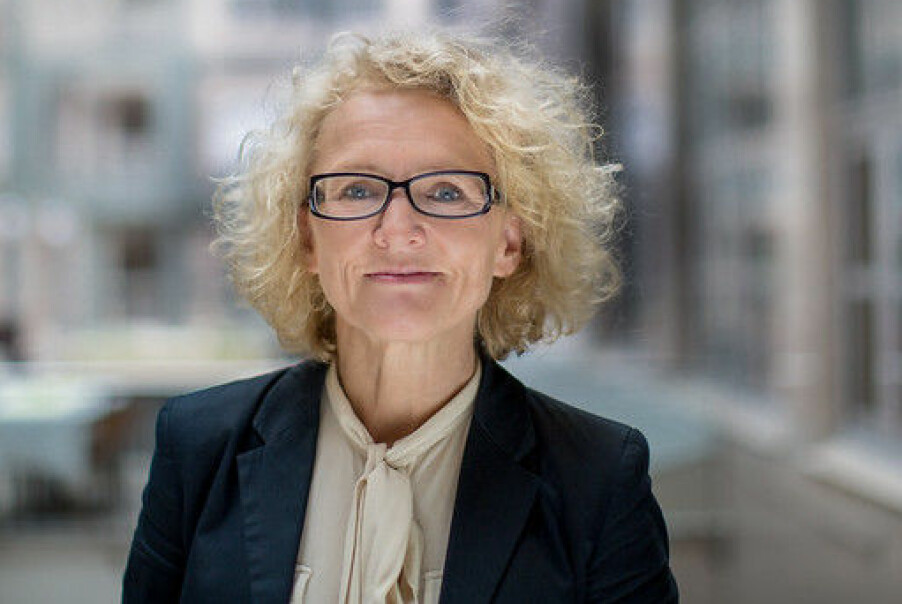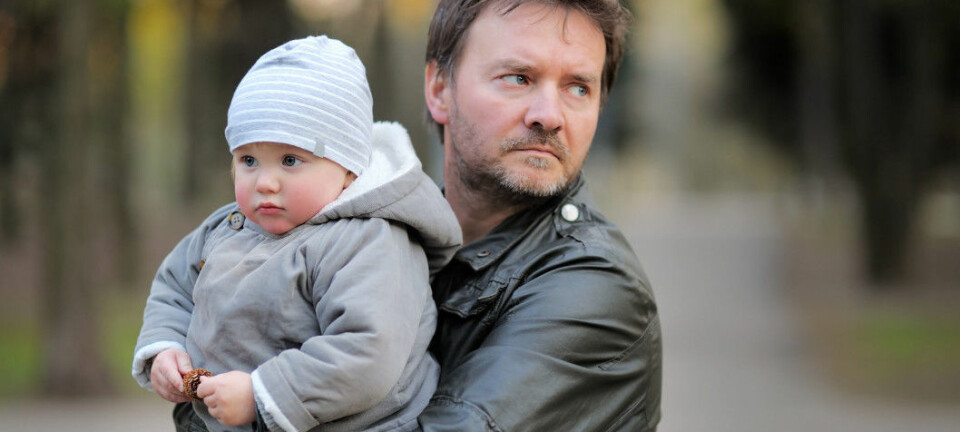
Researchers are worried:
Documents missing in one fifth of the cases handled by the Norwegian Child Welfare Services
Researchers have gained unique insights into how Norway’s Child Welfare Services work and how they justify what they do. In one fifth of the cases studied, the researchers found no documents summarizing how the Child Welfare Services had handled the case.
The Norwegian Child Welfare Services is going through rough times.
Currently, about 30 cases concerning this Norwegian welfare service are pending before the European Court of Human Rights. Norway was recently convicted of poor case handling yet again.
Little earlier knowledge
A large research group has now studied the records of 1365 children who were referred to 16 municipal Child Welfare Services, from the beginning of 2015 to mid-2017. Researchers also interviewed managers and case workers.
This is the first such comprehensive review of municipal case management in the Child Welfare Service.
Svein-Arild Vis is an associate professor at RKBU North - Regional Centre for Child and Youth Mental Health and Child Welfare at UiT Norway’s Arctic University. He is the manager for the project Barnevernets undersøkelsesarbeid – fra bekymring til beslutning (The Child Welfare Service's Investigative Work – from Concern to Decision).
“We feel that we can draw a comprehensive picture of what the Child Welfare Services do when they investige concerns. This is brand new. Up to now we haven’t known much about this or about similarities and differences in the way the Child Welfare Services work in Norway,” he says.

Missing documentation a reason for concern
Vis sees no reason to sound the alarm about the Norwegian Child Welfare Services after this review.
“We’ve found that the decisions they end up making are basically reasonable and understandable."
Still, he's a little worried.
“The greatest cause for concern is that some documentation is missing in a good number of cases, both with regard to plans for how an investigation of a notification of concern should be carried out and how it is concluded. This makes it difficult to know whether a case has been properly investigated or not."

In one fifth of the investigations, the researchers found no documents summarizing what the Child Welfare Services had done in the case.
In one third of the cases where concern about physical violence and sexual abuse was reported, the final report makes no mention of the conclusions arrived at. If a new report about the same child comes in, important information may have been lost along the way.
“Improving confidence in Child Welfare Services will require better documentation,” says Vis.
Recognizes need for improvements
In an email to ScienceNorway, Mari Trommald, director of the Norwegian Ministry of Children, Youth and Family Affairs (Bufdir), writes that new professional support for child welfare workers are being developed. They should provide support in conducting assessments from the initial referral all the way to implemented measures.
The Bufdir director recognizes the need to improve the child welfare management practices.
“We’re most concerned about making sure professional assessments are documented. This is important to ensure the legal security of children and parents. They need to be able to see the reason for dropping a case or for initiating an investigation,” Trommald writes.
She writes that this is something Bufdir will be focusing on going forward. Staff will address the issues in meetings with county officials and the municipal Child Welfare Services. They will also change guidelines as needed and assess the need for new guidelines.
Trommald also sees a need for increasing employee's competencies.
“Among other things, we’ve proposed that 80 per cent of the employees in municipal Child Welfare Services must have a master's level education and that they have to pass a national examination on relevant laws. Through the Norwegian Strategy for Skills Policy, we’ve already initiated a number of measures, including better management training, more continuing education and professional support in selected Child Welfare Services,” she says.
Parents are key
When looking at how the Child Welfare Services are debated in the media, it’s easy to get the impression that coercion permeates the work.
But the research shows that every fourth case that the Child Welfare Services dismisses is due to parents not wanting help. This applies to cases where the Child Welfare Services are concerned for the children and see a need for support, but where parents decline to get help.
In the report, the researchers question whether the strong focus on parents means that the children's challenges and difficulties aren’t adequately captured.
There is a high threshold in Child Welfare Services when it comes to forcing someone to receive help. Nor is it the case that all children who need help with developmental or social problems should receive this help from the Child Welfare Services, says Svein-Arild Vis.
“If you want to know what a family’s life is like, the child and the parents are the most important informants. If the Child Welfare Services don’t involve the parents collaboratively, it’ll be really difficult to find out what it’s like in the home,” says the researcher.
Big differences between municipalities
Norway has no national standard for how to conduct a child welfare investigation.
This means that a child welfare case is not necessarily handled in the same way in different parts of the country. To a large extent, it’s been up to each municipality in Norway to organize the work as they have deemed appropriate.
Several researchers have called for a national standard, among them Svein-Arild Vis (Link to op-ed in Norwegian).
The new study shows that there are major differences between the municipalities in how many referrals the Child Welfare Services investigate further.
Some municipalities dismiss a lot of cases, others almost none. In the larger cities, the referrals are investigated more often than in smaller municipalities.
Svein-Arild Vis believes more systematic processes are needed in child welfare work.
“Cases referred to the child welfare services vary considerably. This means that not all cases can be investigated in the same way. So we need a professional system that allows the child welfare services to make conscious decisions about what information is relevant for shedding light on the current concerns."
In 2018, the Norwegian Child Welfare Services received a total of 57 013 notifications. 47 279 investigations were started.
Safeguarding legal security
Trommald in Bufdir says that this new research confirms what they have seen before, that the variations between and in the services can be huge. This means that some Child Welfare Services handle referrals and investigations well, while others face greater challenges.
“We’ve known that making specific assessments and documenting them in the Child Welfare Services have been found lacking, but it’s staggering to read about how this manifests itself in the investigative phase, even in cases where serious concerns have been reported.”
In addition to losing important information, there is also a risk that the legal security of children and parents is not adequately safeguarded, says Trommald. It is more difficult to verify the child welfare assessments when they are not documented.
Lots of notifications lead to more cases dismissed
Investigations were more often dismissed in municipalities that received a lot of notifications of concern and where many low-income families lived, the study shows.
The researchers have no explanation as to why this is.
“It may be that the municipalities that drop lots of cases have too few resources to deal with them. But it may also be that in these municipalities there is a greater eagerness to report cases from cooperating partners. It may then be that the Child Welfare Services end up with several less serious issues on the table,” says Vis.
Trommald says this is something Bufdir will follow up more closely.
“We’re committed to having a uniform practice as a basis for making better assessments."
Takes too long
On average, it took almost three weeks from when the Child Welfare Services decided to investigate a referral until they were up and running, the research shows. In some cases, it took almost four weeks.
Trommald thinks this is too long. The Child Welfare Services have only three months to decide whether measures need to be taken.
“It’s important that the Child Welfare Services get started quickly, and it’s especially important to use this time to get to know the child and the family well. There can be a lot of reasons why it takes a long time to get started – the number of families the Child Welfare Services are assisting is an important factor, for example. However, for children and families who know that a notification has been sent to the Child Welfare Services, it can be a burden to wait for something to happen,” Trommald says.
Immigrant parents more in the spotlight
A notification of concern reported about a family with an immigrant background is more likely to be investigated by the Child Welfare Services than one about an ethnic Norwegian family, regardless of the content of the concern. However, immigrant families are not any more likely to receive assistance after the completed investigation.
Immigrant families are particularly overrepresented in reports of violence, the study shows.
The Child Welfare Services investigate cases involving suspected violence differently from other cases. These investigations are more similar to criminal investigations, and conversations are conducted with the child without the parents being notified.
This can make it more difficult to establish trust and cooperation with the family afterwards, Vis says.
“It’s clear that people who are called in for this type of conversation encounter a more suspicious tone from the Child Welfare Services than those who are called in for a conversation to plan help for the family,” he says.
Can explain immigrant scepticism
The researchers behind the new report believe this may well impact immigrants' perception of the Norwegian Child Welfare Services.
Bufdir's director Trommald agrees.
“This bias can help explain the scepticism and lack of confidence in the Child Welfare Services. The investigation needs to be adapted to the individual child and family, rather than working from a standard template for all cases of violence. However, it’s important to emphasize that the approach described in the research report is both important and correct in cases where rapid protection of the child is required,” writes Trommald.
Surprisingly few children involved
When the Child Welfare Services receives a notification of concern, there should be a low threshold for starting an investigation to determine whether the child should be followed up or not.
The regulations state that the Child Welfare Services should always talk to the child addressed in the report, unless special considerations would indicate otherwise.
The researchers found that a surprisingly large proportion of children had not been talked to during the investigative phase.
“We found that the Child Welfare Services spoke to the child in 60 per cent of the cases. Age is one explanation for why many children weren’t involved. Many of these children are very young. But the Child Welfare Services hadn't had conversations with very many youngsters at the older end –ages 16 to 17 – either", says Vis.
Reference:
Øivin Christiansen et al.: Når barnevernet undersøker. Barnevernets undersøkelsesarbeid – fra bekymring til beslutning. (When child welfare services investigate: child welfare investigation work – from referral to decision.) Sub-report 4, RKBU North, 2019
———
Read the Norwegian version of this article on forskning.no



































